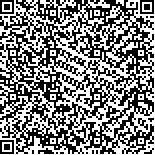| 摘要: |
| 近岸海域水母暴发可导致滨海火/核电厂取水口堵塞,对电厂安全运行造成潜在威胁。寻找水母源地及其迁移路径是水母治理的基础。本文基于拉格朗日质点追踪方法(LTRANS)建立反向追踪模型,并结合水母生态学特性对2015年6-9月聚集在红沿河电厂海域的大型水母进行溯源,获得水母源地及迁移路径,可以为螅状体栖息地寻找和水母拦截打捞提供依据,对近岸海域水母灾害防治具有重要指导意义。溯源结果表明:(1)红沿河电厂及其邻近海域的水母可能来自多个不同源区,辽东湾西部、北部及电厂南北两侧等海域的水母均有可能迁移至电厂附近;(2)受水温和环流影响,6-9月期间到达电厂附近的水母主要源区及迁移路径不同,早期出现在电厂海域的水母很可能是局地产生的,而7-9月持续的高风险水母灾害则主要取决于渤海不同源区水母的物理聚集;(3)根据水母的主要迁移路径,建议在电厂取水口约15km的海域设置一条封闭监测断面,对水母进行实时监测;在距离取水口约30km的外侧海域设置一条调查断面,于7月初至8月中旬,每5天进行一次定点拖网调查。此外,在距离电厂取水口15-20km的西南方向上,对水母进行拦截打捞可大大降低水母入侵风险。 |
| 关键词: 大型水母 溯源 迁移路径 红沿河电厂海域 |
| DOI:10.11693/hyhz20190600104 |
| 分类号:Q178.1;P731 |
| 基金项目:国家重点研发计划重点专项,2017YFC1404403号;鳌山科技创新计划项目,2016ASKJ02号;国家自然科学基金项目,41806018号。 |
附件 |
|
| TRACING GIANT JELLYFISH IN COASTAL WATERS NEARBY HONGYANHE POWER PLANT |
|
SUN Xue1, WEI Hao1, ZHANG Hai-Yan1, WANG Yan-Tao2, ZHANG Guang-Yue1, LIU Han-Lin3
|
|
1.School of Marine Science and Technology, Tianjin University, Tianjin 300072, China;2.Key Laboratory of Marine Ecology and Environmental Sciences, Institute of Oceanology, Chinese Academy of Sciences, Qingdao 266071, China;3.State Nuclear Electric Power Planning design&Research Institute Co., Ltd, Beijing 100095, China
|
| Abstract: |
| In coastal waters, jellyfish bloom often clogs water intakes of electricity power plants, imposing a potential threat to the safe operation of power plants. It is fundamental to determine the sources and trajectories of jellyfish and control jellyfish bloom. In LTRANS particle-tracking method, a backward particle-tracking model that coupled with ecological characteristics of jellyfish is established to trace the sources of giant jellyfish in waters nearby Hongyanhe Power Plant from June to September 2015, to understand the jellyfish habitat and jellyfish salvaging, which has important instructive significance for prevention and controlling of jellyfish disasters in coastal waters. The results indicate that:(1) the jellyfish nearby the power plant may come from different sources, including the western and northern parts of the Liaodong Bay and the north and south sides of the power plant; (2) affected by water temperature and circulation, the main sources and trajectories of jellyfish migration during June to September are different. The jellyfish that appeared in the early stage is likely generated locally, while the high-risk jellyfish disasters in July to September mainly result from the physical aggregation of jellyfish from different sources in the Bohai Sea; (3) according to main trajectories of jellyfish, it is suggested that a closed monitoring section should be conducted in the area about 15 km from the power plant intake for real-time jellyfish monitoring. Another section can be set up in the area about 30 km away from the intake, in which a fixed-point trawl survey was conducted every 5 days from the early July to mid-August. In addition, the risk of jellyfish invasion can be significantly reduced by intercepting and cleaning up jellyfish in the southwest direction 15-20km from the power plant. |
| Key words: giant jellyfish backward particle-tracking trajectory waters nearby Hongyanhe Power Plant |
